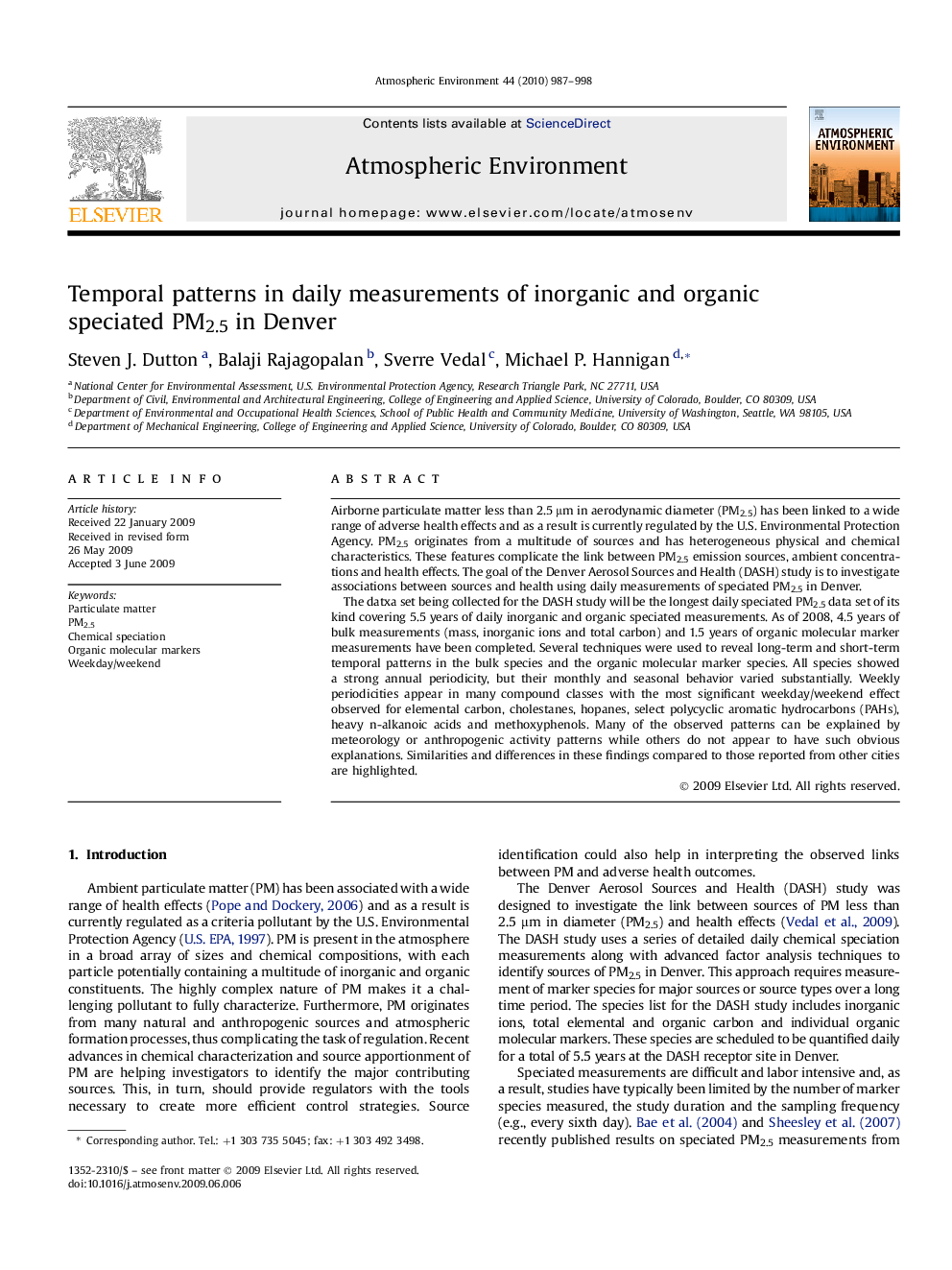| Article ID | Journal | Published Year | Pages | File Type |
|---|---|---|---|---|
| 4441073 | Atmospheric Environment | 2010 | 12 Pages |
Airborne particulate matter less than 2.5 μm in aerodynamic diameter (PM2.5) has been linked to a wide range of adverse health effects and as a result is currently regulated by the U.S. Environmental Protection Agency. PM2.5 originates from a multitude of sources and has heterogeneous physical and chemical characteristics. These features complicate the link between PM2.5 emission sources, ambient concentrations and health effects. The goal of the Denver Aerosol Sources and Health (DASH) study is to investigate associations between sources and health using daily measurements of speciated PM2.5 in Denver.The datxa set being collected for the DASH study will be the longest daily speciated PM2.5 data set of its kind covering 5.5 years of daily inorganic and organic speciated measurements. As of 2008, 4.5 years of bulk measurements (mass, inorganic ions and total carbon) and 1.5 years of organic molecular marker measurements have been completed. Several techniques were used to reveal long-term and short-term temporal patterns in the bulk species and the organic molecular marker species. All species showed a strong annual periodicity, but their monthly and seasonal behavior varied substantially. Weekly periodicities appear in many compound classes with the most significant weekday/weekend effect observed for elemental carbon, cholestanes, hopanes, select polycyclic aromatic hydrocarbons (PAHs), heavy n-alkanoic acids and methoxyphenols. Many of the observed patterns can be explained by meteorology or anthropogenic activity patterns while others do not appear to have such obvious explanations. Similarities and differences in these findings compared to those reported from other cities are highlighted.
